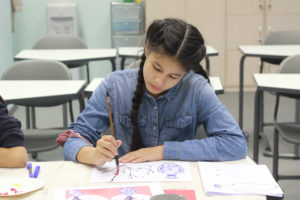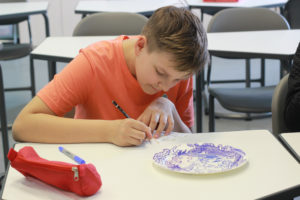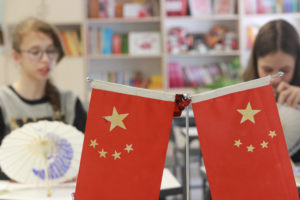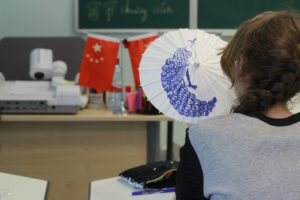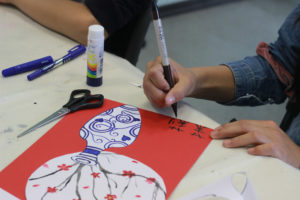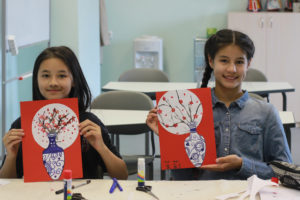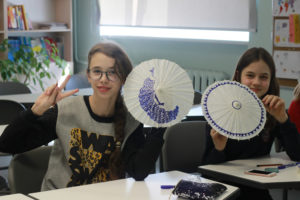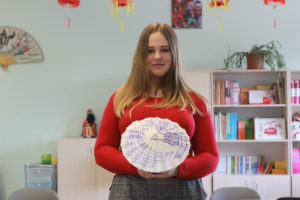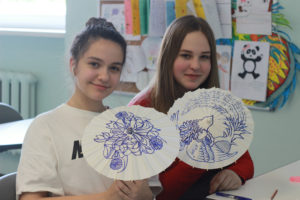Blue and White Porcelain Painting activity at the Confucius Classroom in Riga 34 Secondary School

“素笔勾勒出青花,笔锋浓转淡。”当地时间5月27日,伴随着婉转的歌声,里加34中学孔子课堂初中兴趣班的学生和汉语教师志愿者梁娟一起走近青花瓷,了解青花瓷的前世今生,并绘制独具个人特色的青花瓷作品。
课程开始,教师询问了学生对中国瓷器的了解,不少学生表示仅知道中国的瓷器很有名,而对具体的种类特点则不甚了解。于是,教师向学生展示了一种别具韵味的中国瓷器——青花瓷,除出示图片外,还陈列了一系列绘有青花瓷图案的饰品、文具,让学生对青花瓷白底蓝花的特点有了更直观的了解。随后教师通过视频的方式向学生介绍了青花瓷的悠久历史及其制瓷技艺的传播。在让学生动手绘制之前,教师为学生播放了中国风歌曲《青花瓷》,期间有学生激动地举手说“我听过这首歌,它很美。”不禁轻声哼唱。最后教师拿出纸伞,学生一阵惊呼,迫不及待拿起画笔创造有自身印记的青花瓷作品。学生们的作品中有花鸟,有龙凤,或细腻,或大气,无一不透露着浓浓的中国味儿。
这次课程不仅提高了学生的动手能力,艺术鉴赏力,还让学生对CHINA一词的“瓷器”义有了更深的了解,对中华文化中深厚隽永的审美意蕴有了更广阔的认识。
On May 27th, local time. the students of the Confucius Classroom in Riga 34 Secondary School approached the blue-and-white porcelain with the Chinese volunteer teacher Liang Juan.
At the beginning of the course, the teacher asked the students about the Chinese porcelain. Many students said that they only know that Chinese porcelain is famous, but they don’t know the specific characteristics. Therefore, the teacher showed the students a unique Chinese porcelain – blue and white porcelain, in addition to showing pictures, also displayed a series of ornaments and stationery with blue and white porcelain patterns, so that students have a more intuitive understanding about the characteristics of blue and white porcelain. Then the teacher introduced the long history of blue and white porcelain and the spread of porcelain making techniques to the students through video. Before the students started to draw, the teacher played the Chinese style song “Blue and White Porcelain” for the students. Finally, the teacher took out the paper umbrella, All of students couldn’t wait to pick up the brush to create a blue-and-white porcelain work with their own thoughts. The students’ works include flowers and birds, dragons and phoenixes, or delicate, or atmospheric, all of which reveal a strong Chinese flavor.
This course not only enhances the students’ practical ability, artistic appreciation, but also gives students a deeper understanding of the “porcelain” meaning of the word “CHINA”, and has a broader understanding of the profound and long-lasting aesthetic implication of Chinese culture.